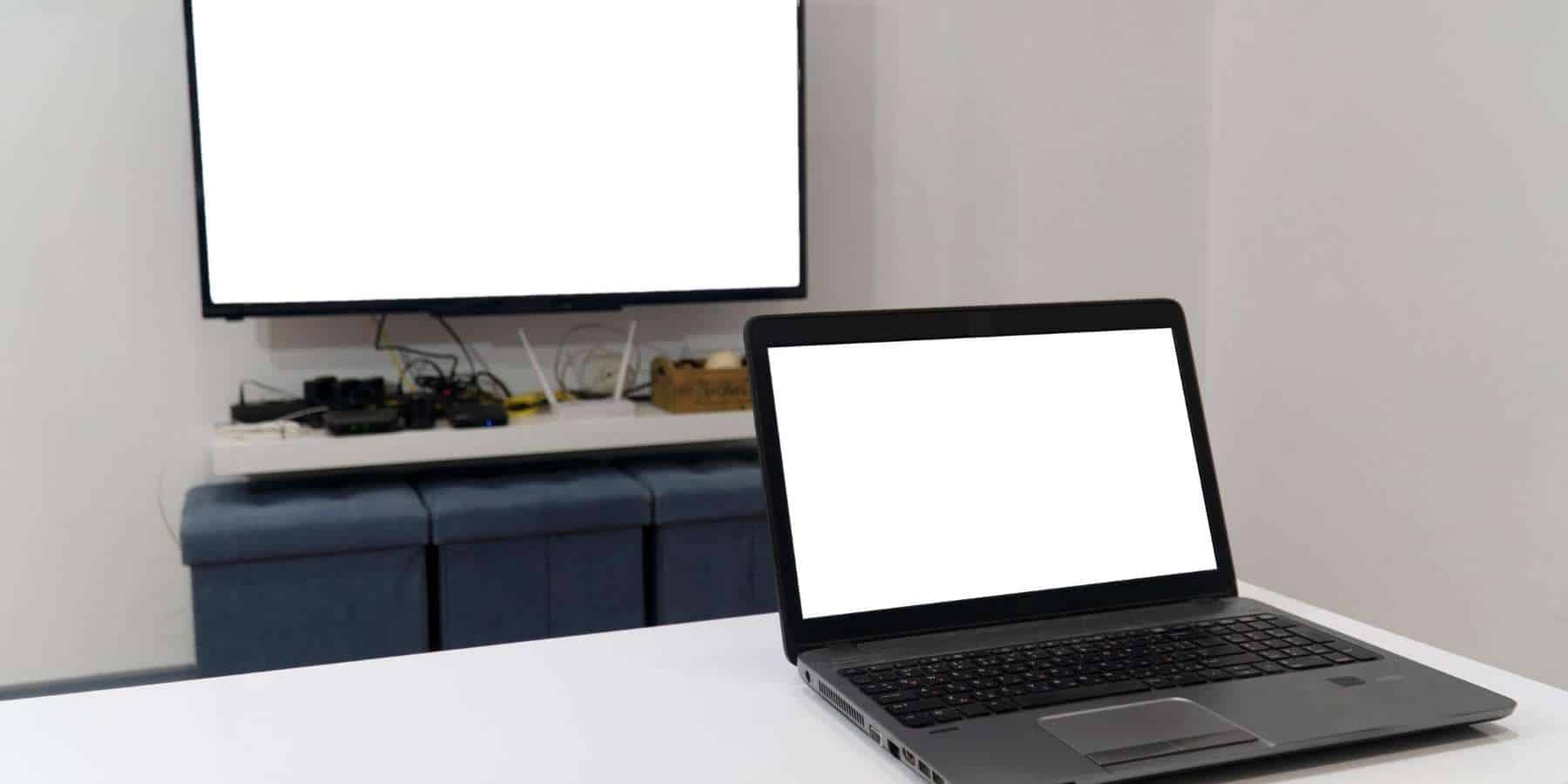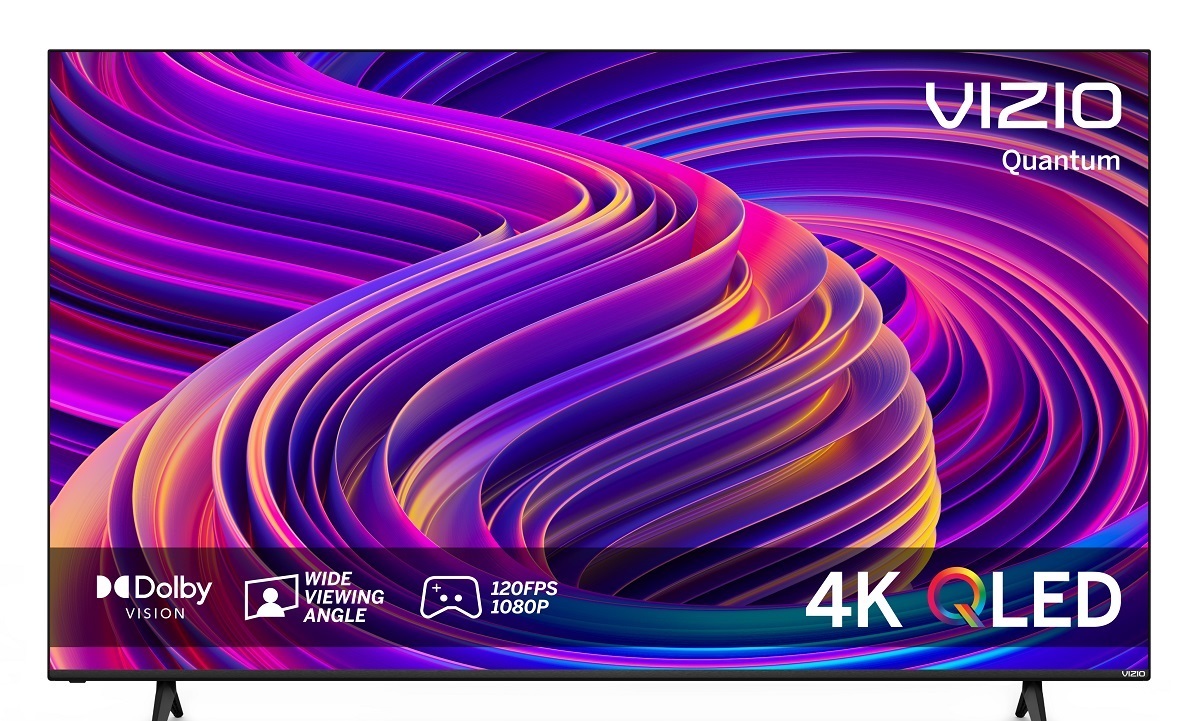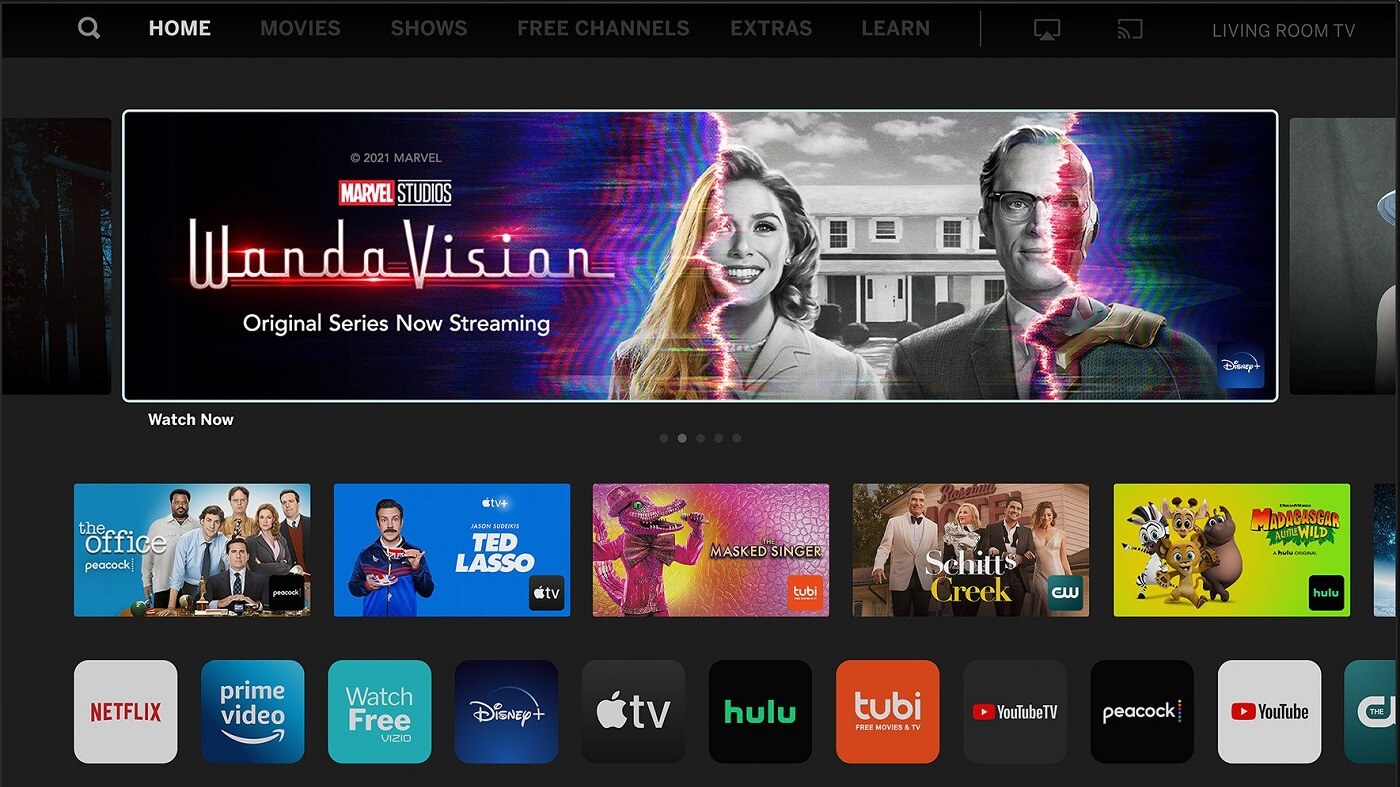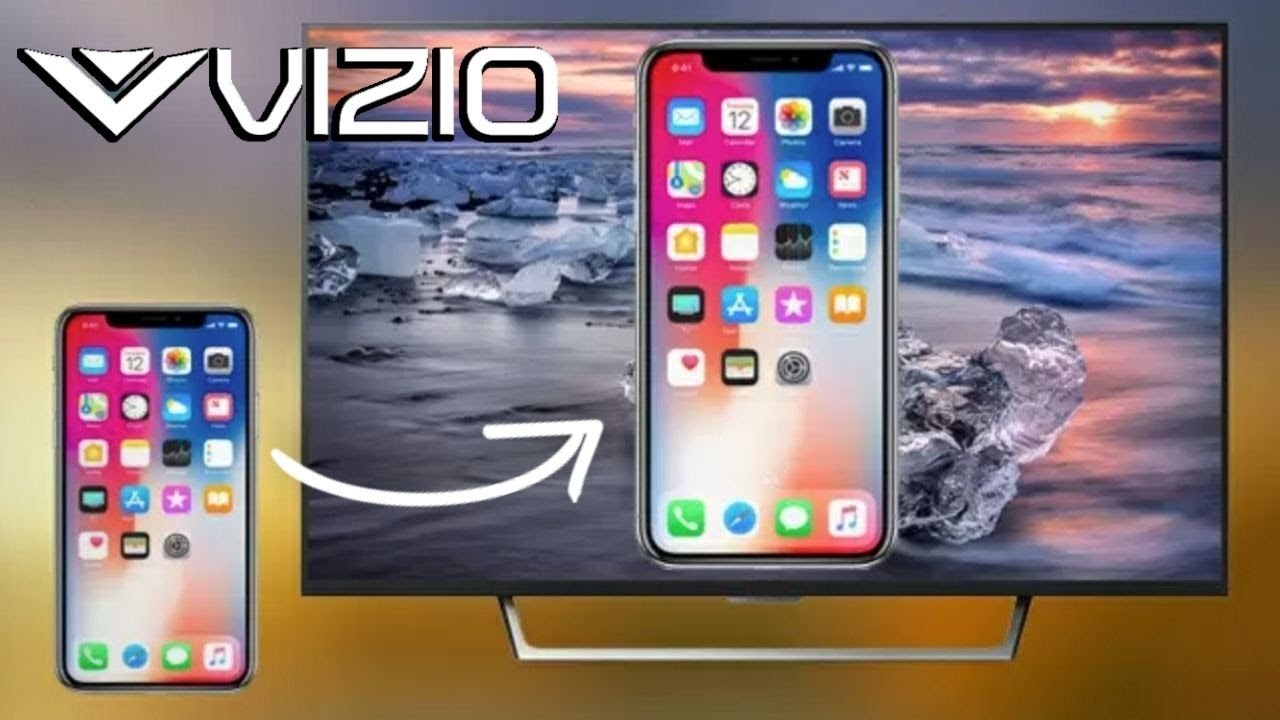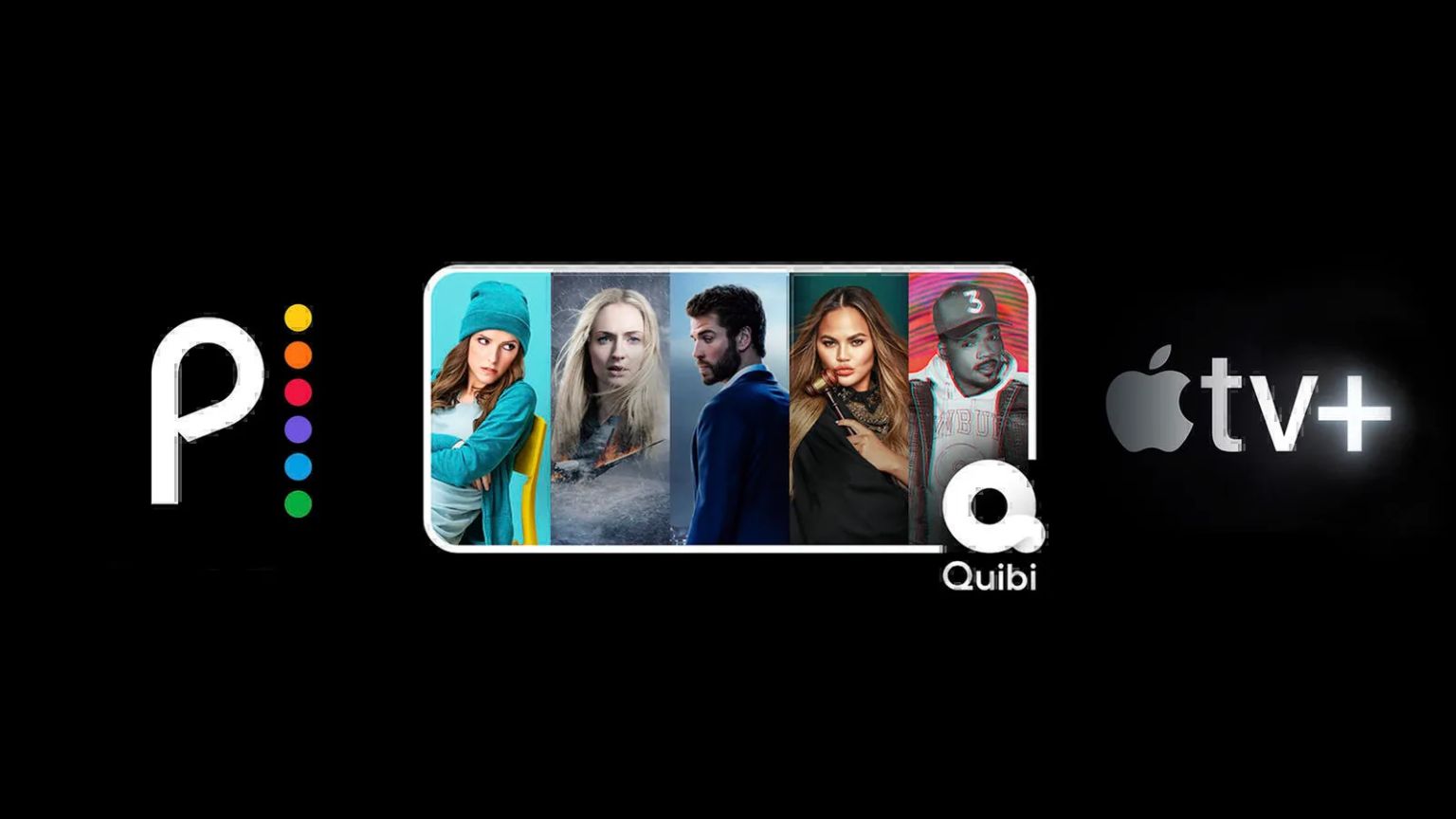Introduction
If you’re looking to connect your laptop to a Vizio Smart TV, you’ve come to the right place. Connecting your laptop to your smart TV can open up a world of possibilities, allowing you to enjoy your favorite movies, TV shows, and online content on the big screen.
Whether you want to stream videos, give presentations, or simply enjoy a more immersive viewing experience, connecting your laptop to your Vizio Smart TV is a straightforward process. In this step-by-step guide, we will walk you through the necessary steps to establish a connection and get you started.
Before we begin, it’s important to note that the specific steps may vary slightly depending on the model of your laptop and Vizio Smart TV. However, the principles and general steps remain the same for most devices.
So, without further ado, let’s dive into the process of connecting your laptop to your Vizio Smart TV and unlock a whole new way to enjoy digital content.
Step 1: Determine the type of connection
Before you can connect your laptop to your Vizio Smart TV, it’s important to determine the type of connection you will use. There are a few different options available, each with its own advantages and requirements. Here are the most common connection types:
- HDMI: HDMI (High-Definition Multimedia Interface) is the most popular and widely supported type of connection. Most modern laptops and Vizio Smart TVs have HDMI ports, making it a convenient choice. HDMI cables transmit both high-quality audio and video signals, ensuring a seamless viewing experience. Simply connect one end of the HDMI cable to your laptop’s HDMI port and the other end to the HDMI port on your Vizio Smart TV.
- VGA: VGA (Video Graphics Array) is an older analog connection that supports video signals only. If your laptop and Vizio Smart TV have VGA ports, you can connect them using a VGA cable. However, since VGA does not transmit audio, you will need a separate audio cable or rely on the laptop’s built-in speakers or headphone jack for audio output.
- Wireless options: Some laptops and Vizio Smart TVs support wireless connections, such as Wi-Fi Direct or Miracast. These options allow you to connect your devices without the need for cables. However, keep in mind that both your laptop and TV must support the same wireless technology for a successful connection.
Once you have identified the connection type, you can proceed to the next step and establish the physical connection between your laptop and Vizio Smart TV.
Step 2: Establish the physical connection
Now that you have determined the type of connection you will be using, it’s time to establish the physical connection between your laptop and your Vizio Smart TV. Follow these simple steps:
- HDMI Connection: If you are using an HDMI cable, locate the HDMI ports on both your laptop and Vizio Smart TV. Plug one end of the HDMI cable into your laptop’s HDMI port, and the other end into the HDMI port on your TV. Make sure the connection is secure.
- VGA Connection: For a VGA connection, find the VGA ports on both devices. Insert one end of the VGA cable into your laptop’s VGA port and the other end into the VGA port on your Vizio Smart TV. Remember to connect the audio cable (if necessary) to the appropriate ports.
- Wireless Connection: If you are using a wireless connection, enable Wi-Fi Direct or Miracast on both your laptop and Vizio Smart TV. Consult the user manuals or manufacturer’s website for specific instructions on how to do this. Once both devices are connected to the same wireless network, they should detect each other. Follow the prompts to establish a wireless connection.
After establishing the physical connection, power on both your laptop and Vizio Smart TV. Your laptop screen should now appear on the TV display. If not, proceed to the next step to adjust the audio and video settings.
Step 3: Adjust the audio and video settings
Once you have successfully established the physical connection between your laptop and Vizio Smart TV, it’s essential to adjust the audio and video settings to ensure optimal playback. Follow these steps:
- Audio Settings: On your Vizio Smart TV, navigate to the audio settings. Depending on your TV’s model and interface, you may find this option in the main menu or the settings menu. Ensure that the audio output is set to the appropriate HDMI or audio input corresponding to your laptop connection.
- Video Settings: Similarly, access the video settings on your Vizio Smart TV. Adjust the screen resolution to match your laptop’s display settings for the best visual quality. You can usually find the video settings in the same menu as the audio settings.
- Laptop Settings: On your laptop, go to the display settings. Make sure the settings are configured to extend or duplicate the display to the TV, depending on your preference. You may need to adjust the screen resolution as well to match the TV’s capabilities.
By ensuring that both the audio and video settings are correctly configured, you will achieve synchronized and high-quality playback on your Vizio Smart TV from your laptop.
If you encounter any issues with the audio or video playback, proceed to the next step for troubleshooting tips.
Step 4: Mirror or extend the laptop’s display
Now that you have established the physical connection and adjusted the audio and video settings, you can decide whether you want to mirror or extend your laptop’s display on your Vizio Smart TV. Here are the options:
- Mirror Display: Mirroring your laptop’s display means that whatever appears on your laptop screen will also be replicated on the TV screen. This is useful when you want to share presentations, photos, or videos with a larger audience. To mirror your display, go to your laptop’s display settings and select the “Duplicate” or “Mirror” option. Your laptop and TV screens should now show the same content simultaneously.
- Extend Display: Extending your laptop’s display allows you to use the TV as a second monitor. This enables you to have different content on the laptop screen and the TV screen, providing a multitasking experience. To extend your display, go to your laptop’s display settings and select the “Extend” option. Now you can drag and drop windows and applications between your laptop and TV screens.
Choose the option that suits your needs and preferences. Whether you want to showcase your work, enjoy a movie night with friends, or make the most of your productivity, mirroring or extending your laptop’s display on your Vizio Smart TV offers flexibility and convenience.
If you encounter any challenges or need additional assistance, refer to the troubleshooting tips in the next section.
Step 5: Troubleshooting tips
While connecting your laptop to your Vizio Smart TV is typically a straightforward process, you may encounter some issues along the way. Here are some troubleshooting tips to help you overcome common problems:
- No Signal: If you are not getting a signal on your TV screen, ensure that the physical connection is secure. Double-check that the HDMI or VGA cable is correctly plugged into both the laptop and TV. You may also try using a different cable to rule out any potential cable defects.
- No Audio: If you are not hearing any sound from the TV speakers, verify that the audio output is set to the correct HDMI or audio input on your Vizio Smart TV. Also, confirm that the volume is not muted and turned up to a suitable level.
- Incorrect Resolution: If the resolution on your TV screen does not match the laptop’s display, go to the display settings on both your laptop and TV. Adjust the resolution settings to ensure they are in sync with each other.
- Wireless Connection Issues: If you are using a wireless connection, make sure that both your laptop and Vizio Smart TV are connected to the same Wi-Fi network. Also, check if your devices support the specific wireless technology you are using, such as Wi-Fi Direct or Miracast.
- Outdated Drivers: In some cases, outdated graphics or audio drivers on your laptop may cause compatibility issues. Visit the manufacturer’s website and download the latest drivers for your laptop’s graphics and audio cards.
If the above troubleshooting tips do not resolve the issue, consult the user manuals or contact the customer support of your laptop and Vizio Smart TV for further assistance.
With these troubleshooting tips in mind, you can overcome common issues and enjoy a seamless connection between your laptop and Vizio Smart TV.
Conclusion
Connecting your laptop to your Vizio Smart TV opens up a whole new world of possibilities, allowing you to enjoy your favorite content on a larger and more immersive screen. By following the steps outlined in this guide, you can establish a physical connection, adjust the audio and video settings, and mirror or extend your laptop’s display on your TV.
Remember to determine the type of connection you will be using, whether it be HDMI, VGA, or wireless. Establish a secure physical connection between your laptop and Vizio Smart TV, ensuring that all cables are properly connected. Adjust the audio and video settings on both devices to achieve the best playback experience.
From there, you can choose to mirror your laptop’s display on the TV or extend it as a second monitor, depending on your preferences and needs. Take advantage of this flexible setup for presentations, movie nights, multitasking, and more.
If you encounter any issues, refer to the troubleshooting tips provided to overcome common problems and ensure a smooth connection.
Now that you have the knowledge and understanding to connect your laptop to your Vizio Smart TV, it’s time to enjoy a new level of entertainment and productivity. Grab your HDMI cable or set up a wireless connection, follow the steps, and embark on a visual journey on your big screen TV.







